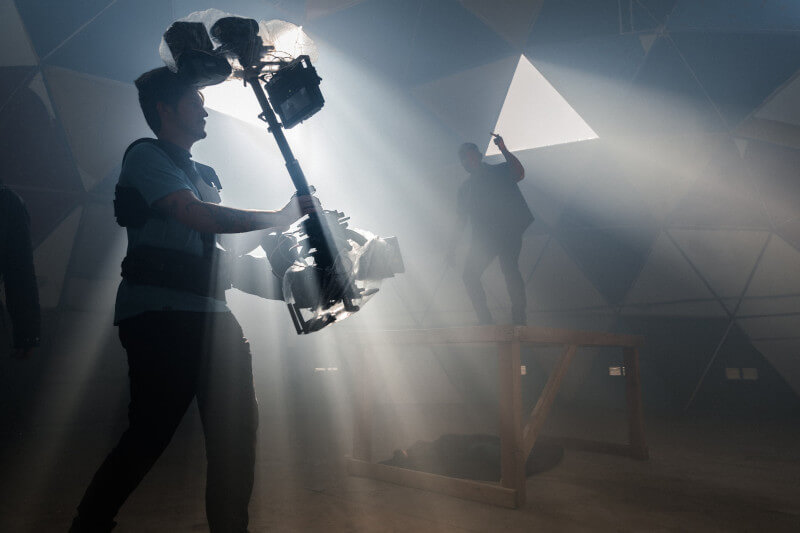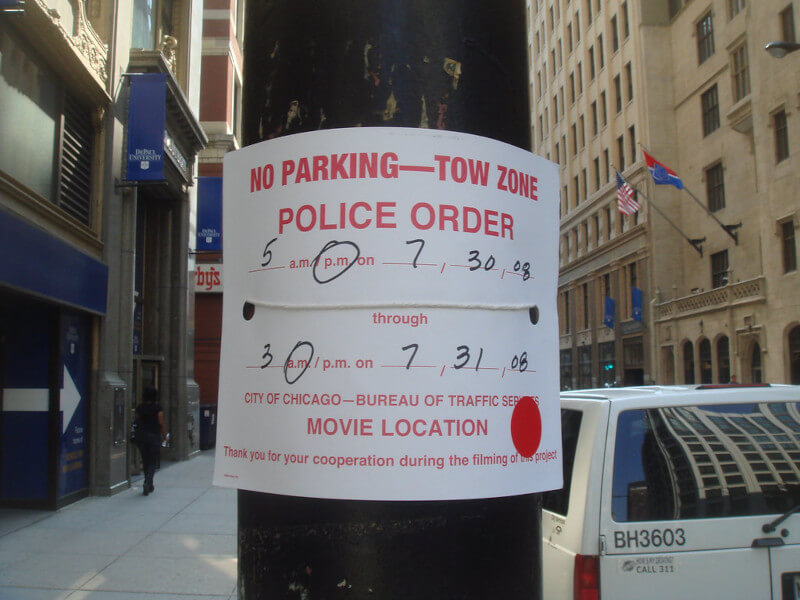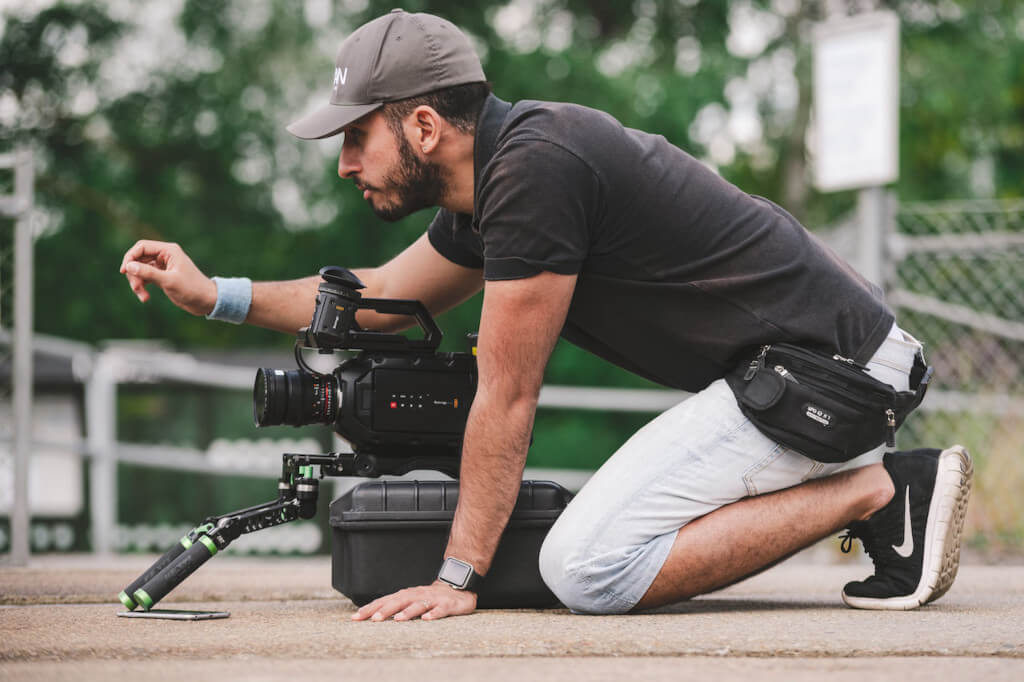Green-screen Technology or Filming in “Real” Locations?
Some scenes simply cannot be filmed in a studio or with a green screen. At other times, a scene needs the splendid calm of Cape Town’s shoreline, while at other times, it requires the hustle and bustle of Cape Town City Streets.
Specifically, South Africa is a country that contains a diverse range of both urban and natural settings. It is comprised of several thriving cities as well as some of the world’s most famous coastlines.
The South African Government has launched an initiative to motivate international filmmakers to shoot in the country to capitalize on the positive impact that this development will have on the local economy and tourism industry. However, shooting on location is not as straightforward as selecting a location and beginning recording. To refrain from wasting resources and time on location shooting, filmmakers ought to plan their shots effectively.
Scouting a Location for Lights and Sounds

When you find a location ahead of time, it enables you to get ready, it tells you what kind of gear you’ll need, and it enables you to predict and strategize for how you’ll play with the lighting and the audio. Before settling on a location to shoot at, you should conduct inspections yourself or delegate someone from your crew to do so. Pay attention to the sounds that can be heard at the location during specific times of the day, particularly when you need to capture a scene. Take some pictures and make some audio recordings so that you can go back and look at them later. It has the potential to save you money and give you access to information about the best locations.
Search for Available Room
Imagine how much space your complete set will require. For example, a small and charming corner bookstore may seem like the ideal location for a scene, but if your crew of ten people and all of their equipment cram everyone else into the space, the shoot will be ruined and the owner may become aggravated. In addition to visualizing how the scene will play out when it is shot on location, think about how the crew and equipment will be positioned there.
Check It Out for Your Protection
Figuring out how to keep your gear safe is yet another advantage of conducting reconnaissance on a location in advance. The components of a camera are extremely sensitive to moisture, and even the tiniest amount can render the camera useless. Your DSLR camera will corrode if it is exposed to salt water. Because shooting in certain locations will require you to be outside in the sun, and because temperatures in South Africa can reach levels that are high enough to melt asphalt, it is important to determine whether or not your equipment will be able to withstand the conditions of the location.
Search for a Sense of Ease
There are other things you must do in addition to making sure that your gear is protected from the weather. If you and the remainder of the crew are heading to be on location for a few days, you will need to make certain that the essential items that you and the remainder of the crew will need are easily accessible. Check to see how far the closest restaurant is, determine how many snacks and how much water you will have on-site, investigate the state of the restrooms, and think about how easy it would be for people to get there on their own if you weren’t leasing a van or driving everyone there in your vehicle. Regardless of whether anything goes wrong with the shoot, it will go more smoothly if the crew is happy.
Maximize Your Time
Being well-prepared allows you to reduce the amount of time spent frantically searching for solutions to problems. When shooting on location, time is more valuable than gold because you almost certainly have to pay by the hour or for a specific time slot. It is important to plan your shoots within the allotted amount of time so that you do not waste time deciding which scene to shoot next.
Look Around for Plugs and Outlets
Power sources are extremely important but are frequently disregarded. When making plans for filming, you need to think about where the power will come from and whether or not you’ll need to bring additional equipment with you, such as extension cords, an electricity adapter that can link up your equipment to outlets, or even the batteries from your vehicle. Because power outlets are often located quite a ways away from several outdoor locations, it is in your best interest to bring along as many spare batteries as you possibly can.
Take Permits Into Account

Novice filmmakers may have the misconception that shooting on location involves a lot of impromptu moments, but in reality, it requires a significant amount of documentation. You are going to be required to apply for a permit or present a strategy to the homeowners of the property in advance, regardless of whether or not you will be filming on public or private property.
At certain locations, the documentation requirements are less stringent. For instance, if you want to film in Cape Town on private property such as a cafe or apartment, you will only be required to provide a shooting plan in that specific circumstance. However, if it is something larger and more public in nature, such as a park, urban areas need a permit.
Even for “ultra-low” impact shoots, in which you only use a single camera and have fewer than 10 members of the crew, the city authority of Cape Town requires filmmakers to obtain a permit. In addition, users of drones are required to obtain a separate permit. Prepare yourself appropriately, and don’t just assume that you can begin shooting freely anytime in a public space. Click here to get in touch with YLO’s production professionals regarding permits in Cape Town.
Since no two places are the same, it is in your best interest to do some study before you go. Cape Town may require permits for even the most basic filming, whereas, in Joburg, the stipulation is waived if you have a crew of fewer than 6 individuals, won’t obstruct citizens or traffic, and only use one camera, tripod, and piece of sound equipment.
Establish Cordial Working Relationships With the Location Owners
If you are renting or shooting on privately owned property, you should do everything you can to leave a good impression on the owner. If you perform a task as simple as cleaning the location after you’ve used it, it can assist you to get discounted rates in the long term and increase awareness about your ethic, which will make it quicker for you to better secure locations for other productions.
Create a Check List for the Equipment
There is no better way to throw away a day that could have been used for shooting than by forgetting to bring the necessary equipment. When you are shooting outside of the studio, you have to relocate loads of equipment, and it is easy to lose track of something important but compact as the focus wheel on your Ronin-S if there is a lot of hustle and bustle.
Create a to-do list the night before a significant shoot on location. A point person should be assigned to be in charge of the lighting and the sound equipment. A PGYTECH Safety Carrying Case is something you should consider purchasing if you plan on attempting to shoot with a DSLR and Ronin-S combination. The case is drop-proof, water resistant, and has an innovative latch system that safeguards your devices from shifts in altitude and pressure. Additionally, the case is designed to carry your Ronin-S, DSLR, and every one of its components.

